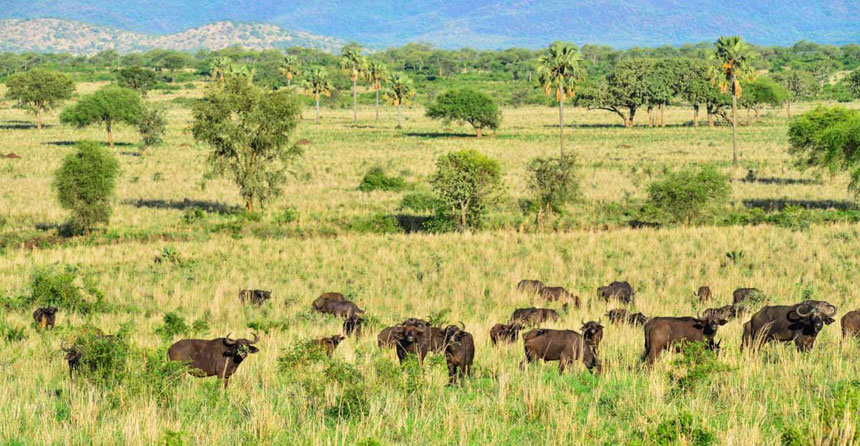The Uganda Wildlife Authority has handed over 3.1 billionto the communities neighboring Uganda national parks in western Uganda.
The conservation area includes four national parks; Queen Elizabeth National Park, Rwenzori Mountains National Park, Semuliki National Park and Kibale National Park in western Uganda. The area also includes one wildlife reserve; the Toro-Semliki Wildlife Reserve.
Through the revenue sharing program, Uganda Wildlife Authority annually gives out cheques to communities that live around national parks. According to the Tourism Revenue Sharing (TRS) policy, this is always 20% of their annual gate collection.
The revenue sharing cheques were handed over at a function presided over by the Minister of Tourism, Wildlife and Antiquities, the Rtd Col. Tom Butime in Kasese Town. Leaders from thirteen districts that surround the protected areas were present at the function.
In addition, present at the engagement meeting are the UWA Board of Trustees Chairman Dr. Panta Kasoma and the Executive Director Sam Mwandha.
According to the statement released by the Uganda Wildlife Authority, the revenue sharing program is aimed at providing life-changing gains for the people living close the national parks. 20% of protected area entrance fees are shared with local governments to benefit the local communities living adjacent to the Uganda national parks.
The funds are also important in stimulating conservation led economies within the districts neighboring Uganda’s national Parks and wildlife reserves.
UWA adopted a revenue sharing program for several reasons. Revenue sharing also fosters conservation behaviors and the attitudes of people living next to the protected areas.
How the Money is shared
There are varying park entrance rates in the Queen Elizabeth conservation area. This all depends on Uganda wildlife Authority classification of parks. The total sum of 3.1 billion Uganda shillings is a 20% collection from all the five stakeholder conservation areas that we mentioned earlier.
5% of the 3.1 billion will be shared among the 13 districts with in the Queen Elizabeth conservation area. This is a tune of 155 million Uganda shillings in administrative cost. The rest of the money is shared among the parishes with in the 13 districts.
However not every parish in these districts is a beneficiary. It is only the communities that share borders with the national parks or wildlife reserves that benefit from thismoney. According to Uganda Wildlife Authority, it is because these are the people that bear the burden of conservation when their crops are destroyed or proper in case the animals cross the boundaries.
Over the past three months, UWA has also given revenues back to the communities around Bwindi MgahingaConservation Area in South western Uganda and the Murchison Falls Conservation Area in North WesternUganda.
How is this money spent?
The money is generally spent on household and community projects that contribute to conservation in two basic ways:
• Reducing human-wildlife conflict
• Improving livelihoods of households in frontline villages
One of the challenges often faced in conservation is poaching. To ensure that people around the conservation areas continue with their life without poaching; households have been supported in projects such as piggeries, tree planting, goat rearing, bee keeping among several other economic activities.
On the community level; construction of schools, health centers, water tanks among several other community benefiting activities have been funded.
How the projects are selected
Each village bordering the park or reserve has a community project management committee in charge of writing applications/proposals for the projects that are selected during the community meetings.
From the village committee; the proposals are forwarded to the parish development committee that further screens out the most important projects. Once the parish development committee has it final list of the most important projects, they forward them to the sub county chief.
The sub county chief then convenes a meeting with the government officers, parish chiefs and conservation area manager to choose the best projects. Once the best projects are chosen, the chief administrative officer informs Uganda wildlife Authority to release the funds for the best projects.
Since 1995, through the Revenue Sharing Program has seen progress from single digit million contributions to double digit contributions to communities bordering the parks. However it is also important to note that there are other sponsors that work with UWA to ensure that these projects are success. These include but not limited to poverty and conservation learning group, UKaid among several other stakeholders.
